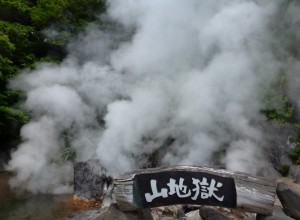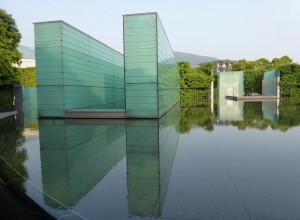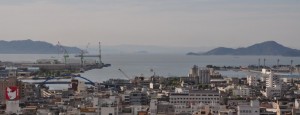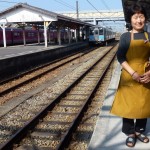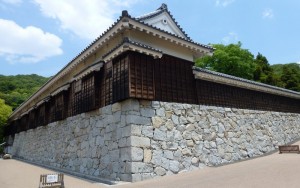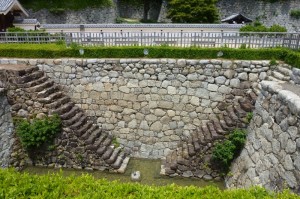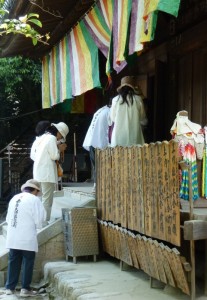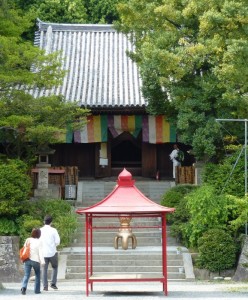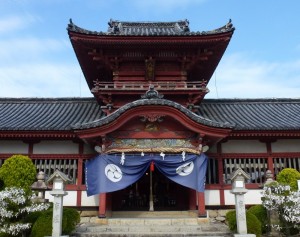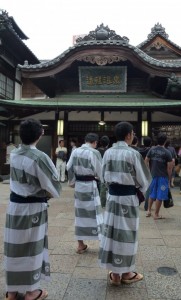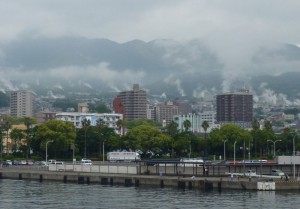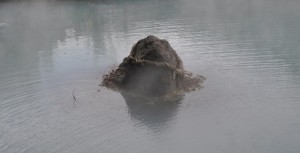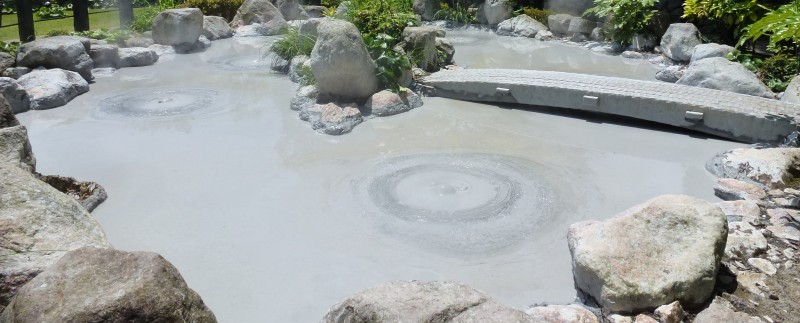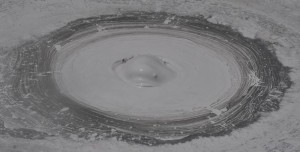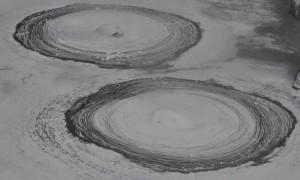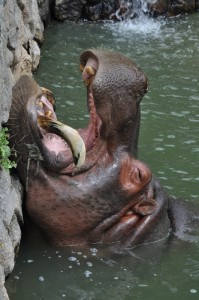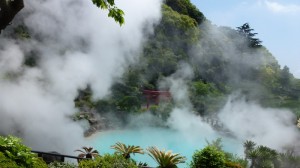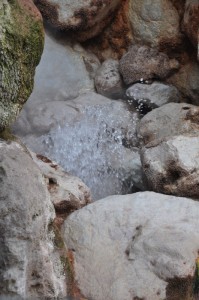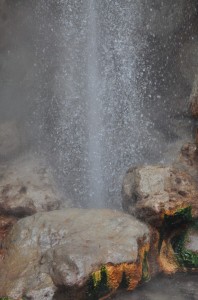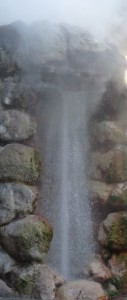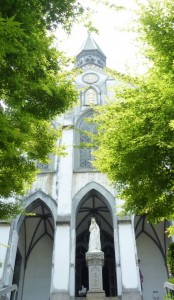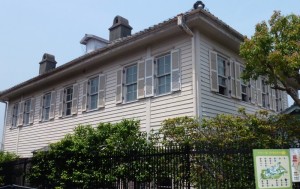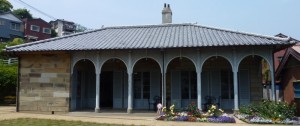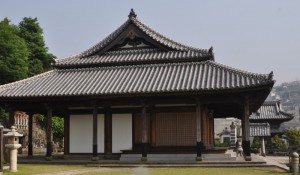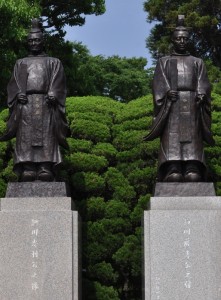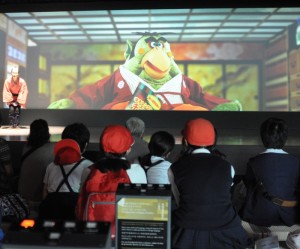A lovely time in Marugame, Matsuyama, Beppu, Nagasaki, Kumamoto & Fukuoka
May 17 Friday (pm): Sightseeing in Marugame
On completion of the 4th stage of the Shikoku pilgrimage i.e. Stop 66-88, I immediately resumed my professional tourist role. I took a train to Marugame founded in 1899 during the Meiji era. About 90% of Japanese fans (uchiwa) are produced here.
I first went to the Marugame Genichiro-Inokuma Museum of Contemporary Art next to the train station. Inokuma, one of the most celebrated Japanese artists donated some 20,000 of his works to the museum which was opened in 1991. He passed away at the age of 90 in 1993. I also saw a special exhibition of a young London- based artist Francis Upritchard entitled ‘Potato Poem’. Though the entrance fee is fairly expensive (¥900), the permanent and temporary exhibitions are good. Above all the museum designed by Yoshio Taniguchi is worth seeing.
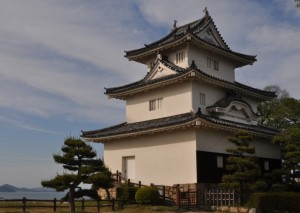 |
|
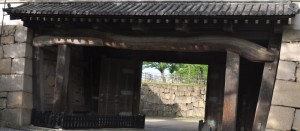 I was hungry and had a large bowl of Sanuki Udon, a specialty of the city. My last stop was the famous Marugame Castle – one of only 12 castles with original wooden tenshu (keep/castle tower) in Japan. The castle standing on a man-made hill over 50m high was first constructed by Chikamasa Ikoma in 1597. The curve of the four-tiered stone wall called ‘fan-shaped slope’ is outstanding. It was a clear day and I had a fantastic view of the Seto Inland Sea, Seto Bridge, Sanuki Plain with the conically-shaped Mt Linoyam (Sanuki-Fuji) (422m) in the middle, the mountain ranges afar, the coastline and harbour, as well as Honshu.
I was hungry and had a large bowl of Sanuki Udon, a specialty of the city. My last stop was the famous Marugame Castle – one of only 12 castles with original wooden tenshu (keep/castle tower) in Japan. The castle standing on a man-made hill over 50m high was first constructed by Chikamasa Ikoma in 1597. The curve of the four-tiered stone wall called ‘fan-shaped slope’ is outstanding. It was a clear day and I had a fantastic view of the Seto Inland Sea, Seto Bridge, Sanuki Plain with the conically-shaped Mt Linoyam (Sanuki-Fuji) (422m) in the middle, the mountain ranges afar, the coastline and harbour, as well as Honshu.
After strolling in the city for over three hours, I took the train back to Kanonji City. It was about 6pm and I went to the nearby Kokohiki Park to watch sunset. Junko prepared a lovely dinner with tempura, fish, rice with vegetable, noodles and minced chicken cooked with egg. I was very lucky to find her guesthouse in the dark.
May 18 Saturday: Kanonji – Matsuyama
Junko took me to station. The limited express train departed at 8:27am and the journey took two and a half hours. It’s a lovely day with clear sky. I had great difficulties in finding a hotel near the station. The first five hotels were full and I was lucky in finding a small family-run hotel and had a nice but small room for ¥3800 a night.
Matsuyama松山市 meaning “pine mountain” was founded in 1889. The city is known for its castle and hot springs (onsen). I left my room at 11:30am and spent almost seven hours sightseeing.
With my Shikoku Rail Pass, I travelled free on the local trams. On my way to the iconic Matsuyama Castle, I stopped by the Ninomaru Shiseki Teien which is now a park. Ninomaru (an intermediate outwork) was used to house the heir apparent from 1687 and as a prefecture office during the Meiji era (1868-1912) but was razed by fire in 1872. One interesting feature is the Ooido Ikoh (large well remains) measuring 18m (long) x13m (wide) x9m (deep). Houses used to be constructed on this base over the well.
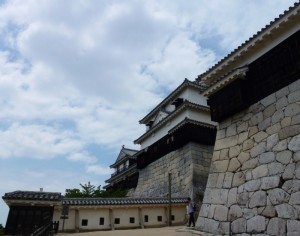 |
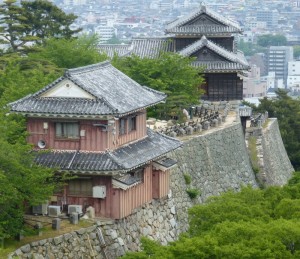 |
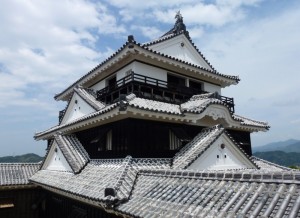 |
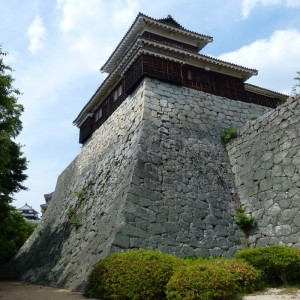 |
The castle with a large five-story tenshu on the flatland Mt. Katsuyama (132m) was first built by Kato Yoshiaki (the first lord of the Matsuyama Feudal Clan) in 1603. The current tenshu was built between 1820 and 1854. Parts of the castle were destroyed by bombing during the Second World War and the city has been restoring it since 1966. The castle is impressive with fantastic views of the surrounding areas.
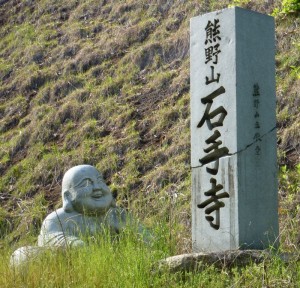 |
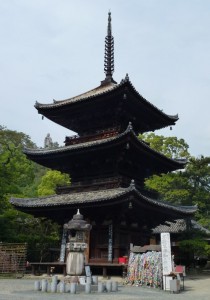 |
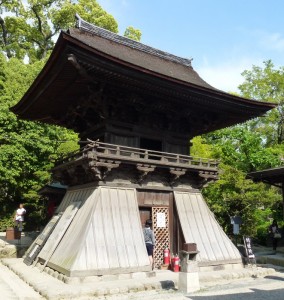 |
|
Eight of the 88 temples in the Shikoku Pilgrimage are in Matsuyama. It’s impossible to see eight temples in one day. I only went to Ishiteji石手寺 (Stop 51 of the Shikoku Pilgrimage) near the Dogo Onsen. Then I visited the Isaniwa Shrine伊佐爾波神社 (1667) before spending an hour and a half at the Dogo Onsen, the oldest hot spring bath in Japan with 3000 years of history. I paid ¥ 800 for a one-hour bath with tea and biscuit after the bath (the normal entrance fee is only ¥400). I find the bath too small, crowded, noisy and hot. I did not stay long and went to the rest room for people watching and the cool breeze.
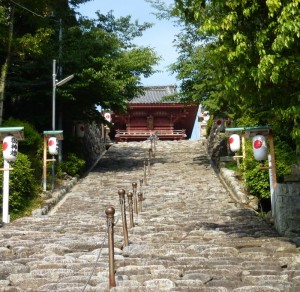 |
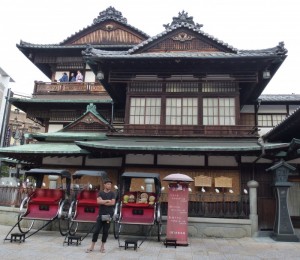 |
In the evening, I had a cheap but fantastic fried chicken dinner set for ¥680 in a local eatery near the station!
May 19 Sunday: Matsuyama, Shikoku – Beppu, KyushuThe nice weather had gone. It was raining and cold when my train left Matsuyama at 10:14am. I arrived in Yatamahama around 11am and took a taxi to the port. The empty ferry left at 1pm with a dozen of vehicles and 40-50 passengers on board.
The rain had stopped when I arrived in Beppu 別府市at 4pm. I stayed in a ryokan near Takegawara Onsen (similar to Dogo Onsen) where I paid ¥3900 for a nice room with a private hot spring bath for an hour.
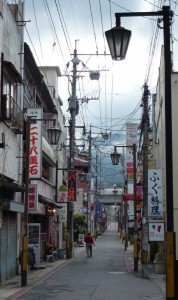 |
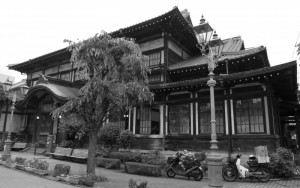 |
I spent a couple of hours looking at the market located underneath the railway tracks, the Takegawara Onsen and the surrounding areas which I find more charming than the Dogo Onsen. The area is not touristic. I had stir-fry noodle with plenty of vegetables in a local eatery run by a Japanese man in his 50s. The food is fine and cheap but the whole place is messy!
May 20 Monday: Beppu – Fukuoka (186km)
Beppu is famous for its unique and visually stunning hot springs (jigoku in Japanese meaning burning hell). The Hells of Beppu located in Kannawa area, are one of Japan’s Three Great Hot Springs.
There are eight famous hells in Beppu with six located in upper Kannawa. I set off at 7am and arrived at Chinoike-Jigoku before 7:45am. As it would not be open till 8:30am, I decided to walk to upper Kannawa to see six hells first. On my way, I made a side trip to see the Shibaseki Onsen. The receptionist then advised me to take a 1.5-km forest trail (instead of following the 2km-long highway) to reach upper Kannawa. I followed her instructions and was the only hiker at such early hours!
I brought a combined ticket for the eight hells for ¥2000 (a ticket for one hell is ¥400). It is amazing to see so many magnificent awesome natural wonders in a relatively small area!
I began at Kamado-Jigoku which has six unique pots of murky budding “thumping” boiling water.
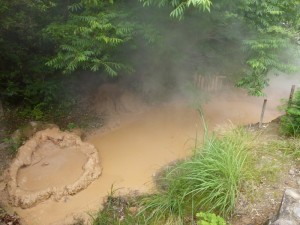 |
|
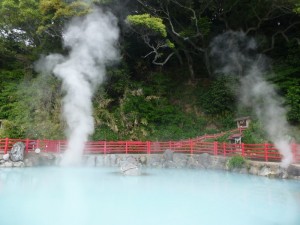 |
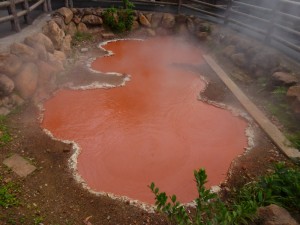 |
Oniishibozu-Jigoku has large and small bubbles of hot gray mud that looks like the shaven heads of monks.
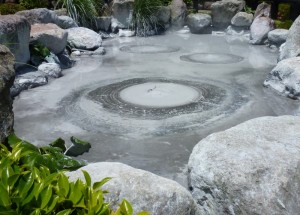 |
|
At Yama- Jigoku, I saw steam coming out of rocks from the mountain. There is also a mini zoo with an elephant, a hippo and several flamingoes.
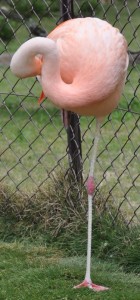 |
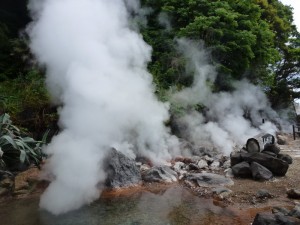 |
Umi-Jigoku is a 200-m deep cobalt-blue pond resembling the sea. The garden in Japanese style with water lilies provides a stunning setting and background for this magnificent and beautiful hell!
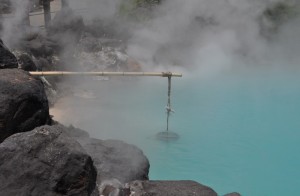 |
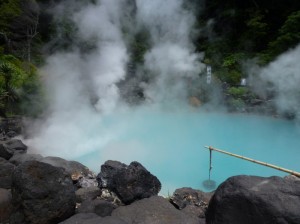 |
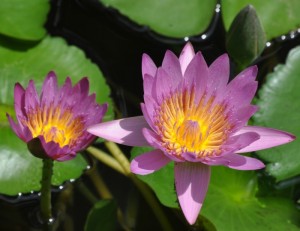 |
|
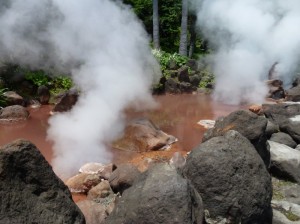 |
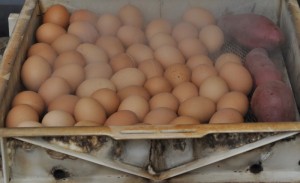 |
Oniyama- Jigoku is amazing: the forces of the steam here can pull one and a half train cars. A variety of crocodiles and alligators are kept here.
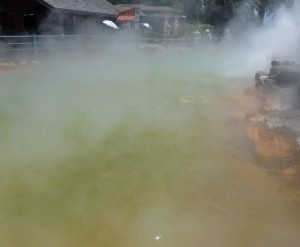 |
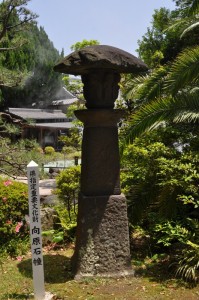 |
Shiraike-Jigoku meaning ‘White-Pond Hell” is creamy white in colour creating a serene atmosphere of the traditional Japanese garden.
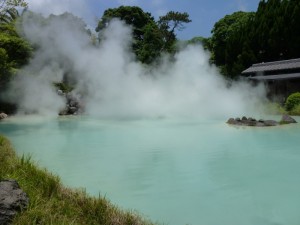 |
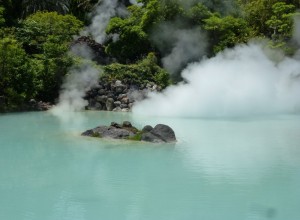 |
After looking at this cluster, I walked two kilometres to reach Chinoike- Jigoku, the oldest natural hot spring in the area. It is red in colour because of the clay underneath.
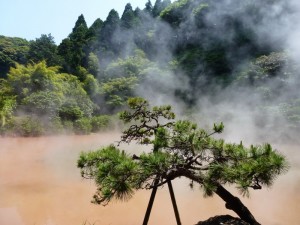 |
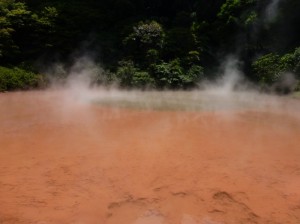 |
The last one is Tatsumaki-Jigoku which is geyser. Boiling water about 100c and steam spout out every 30-40 minute and the phenomenon lasts eight to ten minutes. It is amazing to watch water coming out from the hole and shooting up to 10m high. I watched the spout for eight minute and the show ended at 2pm sharp!
I took a bus back to the city and boarded the 3:20pm express train with my 3-day Kyushu Rail Pass (¥7000). I arrived in Fukuoka福岡市at 5:28pm. What a fantastic day!
May 21 Tuesday: Fukuoka – Nagasaki – Fukuoka (308km)
Nagasaki 長崎市,founded by the Portuguese in the second half of the 16th century was a centre of Portuguese and European influence till 19th century. Hideyoshi, the daimyo (feudal lord) who heard that the Spanish Franciscans were the vanguard of an Iberian invasion of Japan ordered the crucifixions of 26 Catholics in Nagasaki on February 5, 1596. Catholicism was officially banned and all missionaries were ordered to leave in 1644 and thousands of converts across Kyushu were killed, tortured or forced to renounce their religion.
Nagasaki became a major centre of ‘Dutch Learning” and was depicted in contemporary art and literature as a cosmopolitan port brimming with exotic curiosities from the Western World. It is the setting for Puccini’s opera Madam Butterfly.
It became a free port in 1859. When Christianity was legalised, Nagasaki regained its earlier role as a centre for Roman Catholicism in Japan. During the Meiji era, it became a centre of heavy industry including ship-building and an important base for the Imperial Japanese Navy. At 11:02am on August 9, 1945, the Allies dropped an atomic bomb on Nagasaki killing and injuring 73,884 and 74,909 persons respectively (It was estimated that 263,000 people were in the city on that day).
I set off before 8am and arrived in Nagasaki at 9:49am. I had a nice day exploring the city with a tram pass (¥500).
Nagasaki resembles Hong Kong in many ways: a port planked by hills on both sides of the harbour. The legacy of the European influence is most visible with the large presence of churches and well-preserved colonial architectures. It was a hot day and I only managed to visit several spots.
I first took the tram to Ishibashi. This area is interesting and historical with foreigners and Chinese settlements. I walked uphill to the Glover Garden. The view from the hill top is fantastic. I did not go into the garden to see the nine historical western-style houses. Instead, I followed a path and arrived at the Oura Catholic Church dedicated to the 26 Saints of Japan who were martyred on Nishizaka Hill. Built in 1864, it is Japan’s oldest remaining Gothic-styled wooden church.
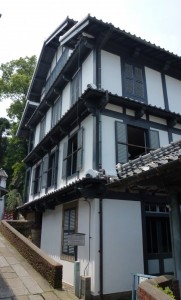 |
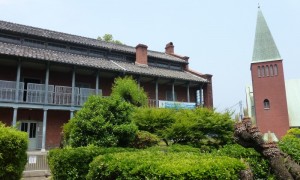 |
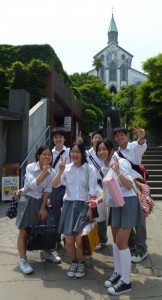 |
I intended to see the former Chinese settlement. But as I followed the canal, I reached Dejima which was once a man-made island to keep the Dutch traders from mixing with the locals. I visited the Dejima Museum where a couple of dwellings and warehouses were restored.
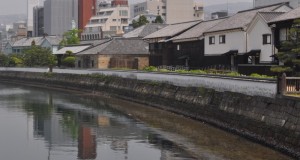 |
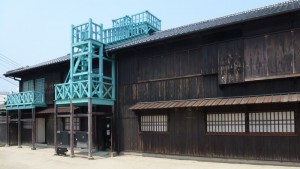 |
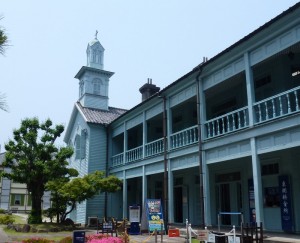 |
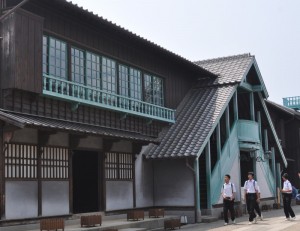 |
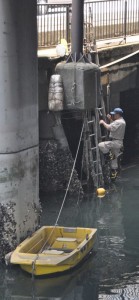 |
It’s time for lunch and I had sashimi by the harbour. Then I visited the former Hong Kong & Shanghai Bank Nagasaki Branch building which is now a museum. The branch was opened in 1904 and closed in 1931. The building designed by Shimoda Kikutaro, is one of Nagasaki’s largest old western-style buildings featuring an arcade on the ground floor, Corinthian pillars on the second and third stories and a gabled roof.
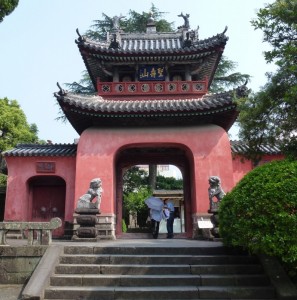 |
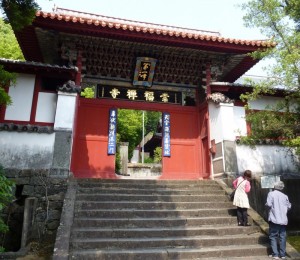 |
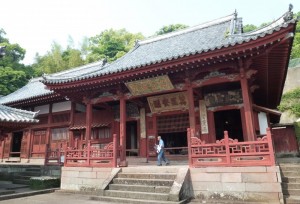 |
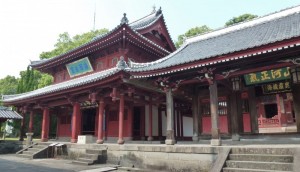 |
I took a tram to Shokakuji-Shita and walked uphill to reach Sofukuji which is essentially a Chinese temple. It was built in 1629 with gates and main structures transported from China to Nagasaki. I learn that there are many temples in the area but could only make a brief stop at Kiyomizudera Temple close to Sofukuji. This temple is dedicated to the Goddess of Mercy with a hall dedicated to Kubo Daishi.
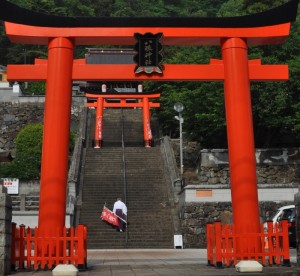 |
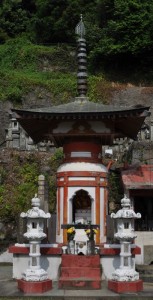 |
Museums normally close at 5pm. I rushed to the Nagasaki Atomic Bomb Museum opened in 1996. The exhibits are mostly related to this tragic day showing the damages and suffering in Nagasaki. The museum hardly mentions Japan’s aggressive wars in China and the Pacific and its role in the Second World War. I also visited the Memorial Hall for the Atomic Bomb Victims. Sadly, I did not have time to visit the new Urakami Cathedral rebuilt on the site of the old church destroyed in 1945.
I arrived in Fukuoka around 8pm after a long but interesting day!
May 22 Wednesday: Fukuoka – Kumamoto – Fukuoka (336km)I took the fastest train to Kumamoto 熊本市which only takes 33 minutes. It’s a pleasant and most comfortable journey. I arrived in Kumamoto at 9am and spent the next seven hours wandering around with a day tram and bus pass (¥500).I took the Castle Loop bus and got off at the Castle. I decided to visit the Kumamoto Prefecture Museum of Art first. I brought a combined ticket and saw the Hosokawa Collection –Eiseibunko Gallery as well. There are 18 generation heads of the Hosokawa family starting from Fujitaka (1534-1610) and Tadatoshi (1586-1641) ) the third head of the family moved to Kumamoto to replace the Kato family as the feudal lord of Kumamoto in 1632. There was also a temporary exhibition of paintings by contemporary Japanese artists. The three exhibitions are different and worth seeing.
I then walked across the park and reached the Kumamoto Castle which together with the Osaka Castle and the Nagoya Castle are said to be the three most famous castles in Japan.
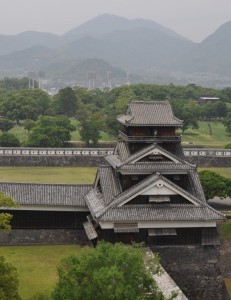 |
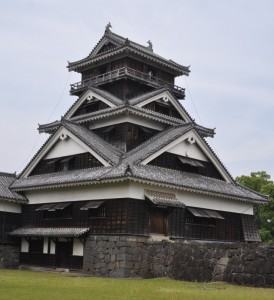 |
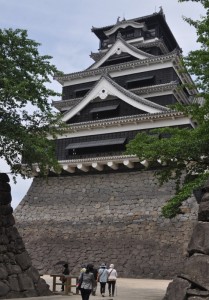 |
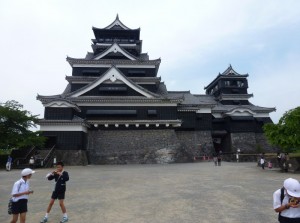 |
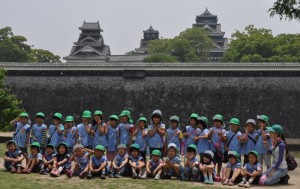 |
First built in 1607 by Kato Kiyomasa (a feudal lord), it had 49 turrets and Musha-Gaeshi (the signature curved stone walls of the castle). Visitors enter the castle through Kuragari-Tsuro, an impressive underground passage built underneath the Honmaru Gotan Palace and between two stone walls. The Uto-Yagura Turret which had five stories was destroyed in 1877 during the Satsuma rebellion against the Meiji government.
The castle was badly damaged during the Second World War and the present structures were mainly reconstructed in 1960s. It is interesting to see the painting in the most extravagant room in the restored Palace depicting the legendary Lady Skokun, one of the four most beautiful women in ancient China. It was a very hot day and I felt a bit exhausted after going up to the top floor of three turrets.
I bought a combined ticket (¥600) for the castle and Sakuranobaba Johsaien which offers a historical and cultural experience “Waku Waku Za”. I find the presentations on the history of the Hosokawa family and the annual trip made by feudal lords by sea and overland to Edo to pay respect to the emperor interesting. I had a lovely lunch with local ingredients for ¥1000.
My last stop was the Suizenji-Jojuen. The momoyama style garden first laid out by Tadatoshi out in 1630s as a retreat for tea ceremony took 60 years to complete. It represents scenes of the landscape between Tokyo and Kyoto including Mt. Fuji.
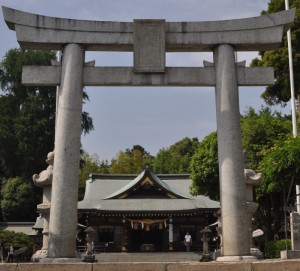 |
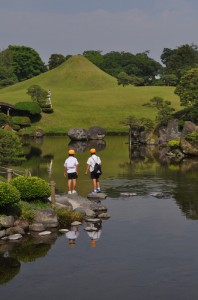 |
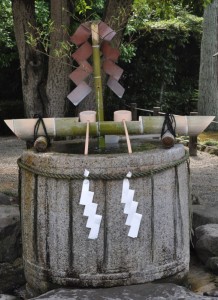 |
I took the fastest train back to Fukuoka around 4:30pm. It was interesting to see the vibrant night life around Tenjin and the canal. I was very tired when I got back to my room after 8pm!
May 23 Thursday: Fukuoka – Hong Kong
I went to the airport by metro and bus (¥250). My plane took off around 11am. I had a pleasant flight despite a brief stop-over in Taipei. I arrived in Hong Kong before 3pm.
Remarks
This is my longest stay in Japan (34 nights in total). After having an enjoyable as well as educational holiday, I have learnt more about the country, its people, culture and way of life.
Conclusion 1
The three rail passes I brought (i.e. a 21-day Japan Rail Pass, a 5-day Shikoku Rail Pass and a 3-day North Kyushu Rail Pass) have enabled me to travel comfortably and freely at an affordable price. This is the first time I set foot on Japan’s four main islands namely Honshu, Hokkaido, Kyushu and Shikoku in a single trip.
Japan has one of the best railway services (if not the best) in the world. The service is excellent: the network is extensive and the trains are fast, clean and reliable. Many old trains have been renovated creatively and now run on scenic routes.
The only problem is that some old and small stations do not have lift or escalator. Old, weak and disabled people (like me) have problems in carrying their heavy luggage. Based on my experience, young Japanese people do not seem to care and offer assistance.
Conclusion 2
My original plan was to complete the Shikoku Pilgrimage and visit 65 temples i.e. Stop 24 to 88. It has not been easy to travel by public transportation as some of these temples are in remote areas. As I also wanted to see other parts of Japan, I eventually decided to focus only on the Kagawa Prefecture which includes 23 temples (Stop 66 to 88). I enjoy the process in finding and reaching these temples which takes time especially when I relied on public transportation.
I am determined to see the remaining 42 temples (Stop 24-65) and shall considering hiring a car next time.
Conclusion 3
I have seen some impressive temples and well-preserved sculptures. The wooden statutes in Toji, Kyoto brought back by Kobo Daishi from China exemplify the artistic achievements in China 1200 years ago. I have not seen sculptures of similar quality from the same epoch in China. The Japanese have preserved some Chinese treasures which have long been lost or damaged in China!
Conclusion 4
The Japanese are excellent students and are perfectionists. They came to China to learn during the Tang Dynasty and the educated aristocrats, scholars and monks could read and compose poems in Chinese. Later, they admired the West and learnt from the French, Italian, Dutch and German. They have succeeded in getting the best from host countries and then churn out something uniquely Japanese. They are meticulous and do everything well and can turn mundane and ordinary things into an art.
Conclusion 5
Japan is an amazing nation. It is modern and urbanized. Yet it maintains its uniqueness and identity through their culture, heritage and tradition. Japan’s image built upon its core values, culture and traditions is distinctive and closely associated with their way of life and nature i.e. gardens, temples, kimono, tea ceremony, cherry blossoms, autumn foliage and hot-springs.
Japan is also an amazing nature wonderland. Its coastline is long and beautiful with abundant seafood. Beppu is a paradise for hot springs and geothermal activities: I have never seen so many different types of hot springs in my life. The Japanese Alpine centred on Mt Tateyama (3015m) with villages such as Shirakawa-go Suganuma and Ainokura (all World Heritage properties) is one of the most beautiful parts in Japan. Japan’s four distinctive seasons and distinctive vegetation is most adorable!
Conclusion 6
What I find most enchanting is the people’s passion and pursuit for beauty and perfection which permeate all sphere of their life. I have spent hours on the train gazing at the fields under intensive cultivation, picturesque villages, lush green forests, rolling hills and clear streams. I am most impressed by the people’s dedication to their land and the environment. The houses are simple, modest and clean. Everything looks perfect, serene and harmonious with nature.
In brief, I have seen and done a lot on this trip even by my own standard. I had a fun time with my friends from Hong Kong in Hokkaido, a reunion with Harry (a most energetic and adventurous 73-years old retiree) in Odarawa and an enjoyable home-stay with Yuko and Junko.
Japan is not a cheap destination. But I find the service and tourism products good and value-for-money. I am sure I shall make a couple more trips to Japan in order to reach the top of Mt Fuji, see the beautiful foliage in autumn and complete my Shikoku pilgrimage. Above all, I want to take the ferry from Wakkanai to Sakhalin, Russia and then China one day!


